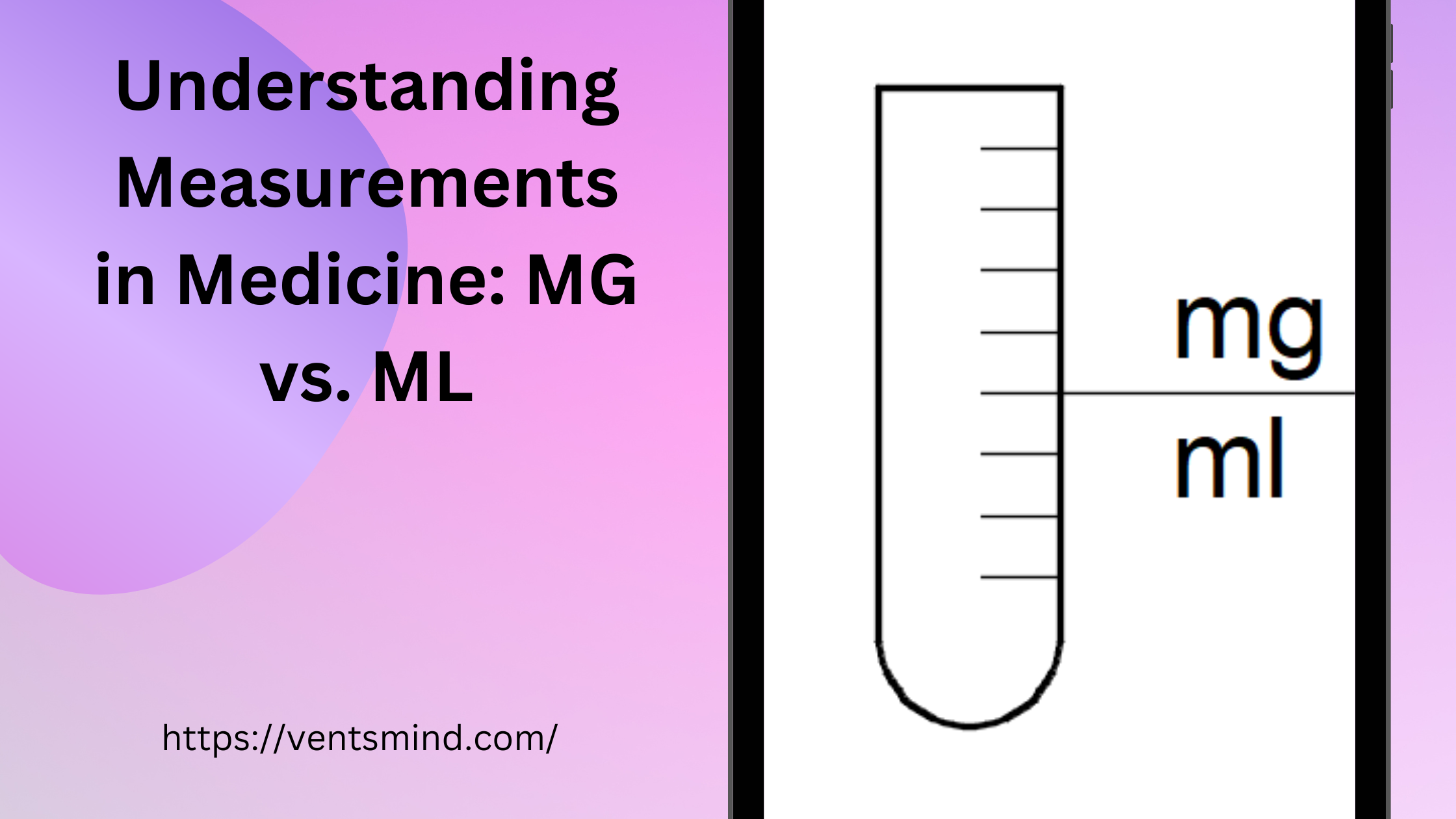
Understanding mg or ml Measurements in Medicine best 2024 information.
In the world of medicine, precision is paramount. When it comes to prescribing medications or administering fluids, understanding measurements is crucial for ensuring patient safety and therapeutic efficacy. Among the most common measurements you’ll encounter are milligrams (mg) and milliliters (ml). These two units of measurement, though seemingly simple, represent different things: one measures mass (weight), while the other measures volume. In this article, we’ll explore the differences between mg and ml, their roles mg or ml in medicine, and how they are used to dose medications properly.
1. The Basics: What Are mg or ml
To grasp the distinction between mg or ml, it’s important to first understand the fundamental units they represent:
- Milligrams (mg): A milligram is a metric unit of mass or weight. One milligram is equal to one-thousandth of a gram (1 mg = 0.001 g). Medications, especially those administered in pill or tablet form, are often measured in milligrams.
- Milliliters (ml): A milliliter is a metric unit of volume. It is equal to one-thousandth of a liter (1 ml = 0.001 L). Liquids, including liquid medications or fluids administered intravenously, are typically measured in milliliters.
While mg refers to the amount of mass, ml is used to express volume. This difference in units plays a significant role in how medications are prescribed and administered.
2. Why mg or ml Matter in Medicine
Accurate dosing is critical in healthcare settings. Underdosing can result in ineffective treatment, while overdosing can lead to toxicity or even fatality. Both mg and ml are standard units of measurement in medicine, but they serve distinct purposes depending on the type of drug or treatment being administered.
Medications in MG
Most solid medications, such as tablets, capsules, and powders, are measured in milligrams. For instance:
- Ibuprofen: Commonly prescribed for pain and inflammation, ibuprofen may be dosed at 200 mg, 400 mg, or 800 mg, depending on the severity of pain and the patient’s medical condition.
- Aspirin: A common over-the-counter drug used for pain relief and as a blood thinner, aspirin is usually available in 81 mg (low dose) or 325 mg (regular dose) formulations.
- Antibiotics: Many antibiotics, such as amoxicillin or ciprofloxacin, are dosed in milligrams. For example, a doctor might prescribe 500 mg of amoxicillin three times per day for a bacterial infection.
The milligram measurement indicates the mass of the active ingredient in the medication, which is key for delivering the right therapeutic effect.
Medications in ML
On the other hand, liquid medications or intravenous (IV) fluids are measured in milliliters. For example:
- Cough Syrups: A common over-the-counter cough syrup might be dosed at 5 ml (one teaspoon) every 4-6 hours.
- IV Fluids: Intravenous fluids, such as saline or dextrose solutions, are also measured in ml. A patient may receive 1000 ml (1 liter) of saline intravenously over a period of time to prevent dehydration.
Measuring in milliliters is important when dealing with fluids, especially in pediatric or geriatric patients who may require very precise dosing to avoid complications.
3. How mg or ml Work Together: Converting Between Mass and Volume
In many cases, medications are available in liquid form, and this is where the conversion between mg and ml becomes important. A liquid medication may have its strength expressed as milligrams per milliliter (mg/ml). For example, a medication might come in a solution of 5 mg/ml, meaning there are 5 milligrams of the active ingredient in every 1 milliliter of liquid.
Example: Calculating a Dose in mg or ml
Let’s say a physician prescribes 10 mg of a certain medication, and the medication is available as a liquid with a concentration of 5 mg/ml. How do you figure out how much of the liquid to give the patient?
To calculate the correct dosage in milliliters, you can use the following formula:Dosage in ml=Prescribed dosage in mgConcentration in mg/ml\text{Dosage in ml} = \frac{\text{Prescribed dosage in mg}}{\text{Concentration in mg/ml}}Dosage in ml=Concentration in mg/mlPrescribed dosage in mg
Using this formula, if a doctor prescribes 10 mg of a medication with a concentration of 5 mg/ml:Dosage in ml=10 mg5 mg/ml=2 ml\text{Dosage in ml} = \frac{10 \text{ mg}}{5 \text{ mg/ml}} = 2 \text{ ml}Dosage in ml=5 mg/ml10 mg=2 ml
So, the patient would need to take 2 ml of the liquid medication to receive a 10 mg dose.
Importance of Understanding Concentration
Understanding the concentration of a medication is critical to ensuring that the correct dose is administered. Concentration indicates how much of the drug is present in a given volume of solution, and errors in calculating dosages can lead to dangerous outcomes. For example, a miscalculation could result in administering too much of a potent drug, which could have harmful effects.
4. Mg or ml in Intravenous (IV) Therapy
Intravenous (IV) therapy is another area where mg and ml play a significant role. Medications or fluids are administered directly into a patient’s bloodstream through an IV, and the dosage must be carefully calculated.
IV Fluids in ML
In IV therapy, fluids are administered in large volumes, often over a long period of time. A patient may require 1000 ml of saline solution over 8 hours, for example. The rate of administration, often referred to as the “drip rate,” is measured in ml per hour. This requires careful monitoring to ensure the patient receives the correct volume at a safe and steady rate.
IV Medications in mg or ml
Certain medications, such as antibiotics, chemotherapy drugs, or pain relief medications, are delivered via IV, but the dosages are calculated in milligrams. These medications are then diluted in an appropriate volume of IV fluid (in milliliters) and administered over a set period.
For example, a doctor might prescribe 500 mg of an antibiotic to be infused over 30 minutes. The healthcare provider must ensure that the medication is properly diluted in the right volume of fluid and that the infusion rate (ml/hour) is accurate.
5. Common Confusions: mg or ml in Medication Labeling
Medication packaging and labeling can sometimes cause confusion between mg and ml. This is especially true for liquid medications, where the concentration may be expressed in mg/ml. Patients and even healthcare professionals must pay close attention to both the dosage and concentration to avoid errors.
Examples of Potential Confusion
- A patient may be instructed to take “10 ml” of a liquid medication, but if they misread the label as “10 mg,” they might underdose or overdose, depending on the concentration.
- Similarly, a medication might be prescribed as “100 mg,” but if the patient only reads the volume (in ml) and not the concentration, they could end up taking the wrong amount.
6. The Role of Pharmacists in Preventing Medication Errors
Pharmacists play a crucial role in ensuring that medications are dispensed accurately, whether in mg or ml. They are responsible for checking the doctor’s prescription, confirming the correct dosage, and educating patients on how to take their medications properly.
Pharmacists also provide guidance on how to measure liquid medications correctly, often recommending the use of syringes or dosing cups that are marked in milliliters to ensure accuracy. This is especially important for pediatric medications, where small differences in dosage can have a significant impact on the patient’s health.
7. Practical Tips for Patients
For patients, understanding the difference between mg and ml can seem daunting, but with a few simple tips, it becomes much easier:
- Read Labels Carefully: Always check both the concentration (mg or ml) and the dosage instructions on the medication label.
- Use Proper Measuring Tools: When taking liquid medications, use a proper measuring device, such as a syringe or dosing cup, to ensure you’re taking the correct amount in milliliters.
- Ask Questions: If you’re ever unsure about a prescription or how to measure a dose, don’t hesitate to ask your pharmacist or healthcare provider for clarification.
8. Conclusion
Understanding the difference between milligrams (mg) and milliliters (ml) is essential for the safe and effective use of medications. While mg measures mass and ml measures volume, the two often work together, particularly in liquid medications. Whether you’re a healthcare professional administering treatment or a patient taking a prescribed drug, knowing how to read labels, calculate dosages, and measure medications accurately can make a big difference in achieving optimal health outcomes.
By staying informed and asking questions when needed, both patients and healthcare providers can help reduce the risk of medication errors and ensure the best possible care.


